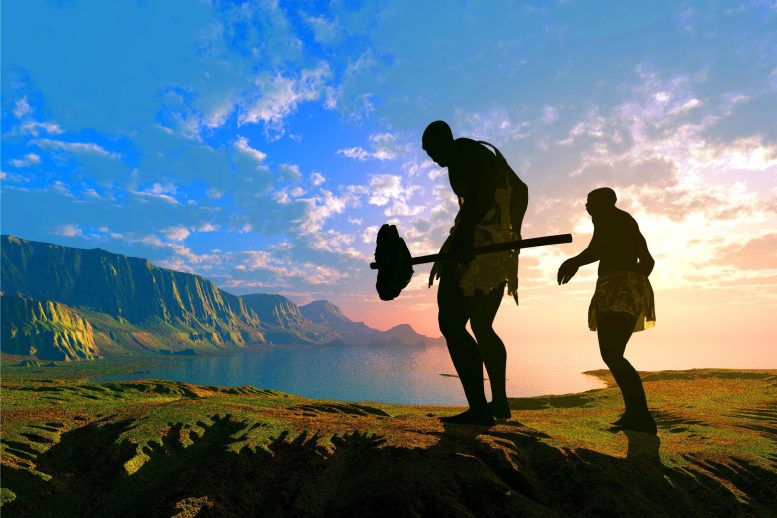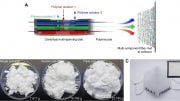
A study by the University of Geneva using isotope geochemistry revealed that 14% of individuals buried 6,000 years ago at the Barmaz necropolis in Switzerland were not locals, indicating mobility in this Middle Neolithic society. The research also showed that the community, including both locals and non-locals, had egalitarian access to food resources, with no dietary differences based on origin or gender.
A team from UNIGE demonstrates that everyone who lived and was buried in the Barmaz necropolises (Switzerland) during the Neolithic period had equal access to food resources.
Researchers found that 14% of individuals in the 6,000-year-old Barmaz necropolis were not locals, indicating mobility in this Middle Neolithic society. The study reveals that both locals and non-locals had equal access to food, suggesting a relatively egalitarian society.
Using isotope geochemistry, a team from the University of Geneva (UNIGE) has uncovered new information about the Barmaz necropolis in Valais (Switzerland): 14% of the people buried 6,000 years ago at this site were not locals. What’s more, the study suggests that this Middle Neolithic agropastoral society – one of the oldest known in the western part of Switzerland – was relatively egalitarian.
The isotope ratios of carbon, nitrogen, and sulfur contained in the bones reveal that all members of the community, including people from elsewhere, had access to the same food resources. These results are published in the Journal of Archaeological Science: Reports.
Neolithic times marked the beginning of animal husbandry and agriculture. In Switzerland, this period spans between 5500 and 2200 BC. The first agropastoral communities gradually moved from a predatory economy – in which hunting and gathering provided the nutrients essential for survival – to a production economy. This radically changed the dietary habits and functioning dynamics of Neolithic populations. The bones and teeth of individuals retain chemical traces that scientists are now able to detect and interpret.
The aim of the study carried out by Déborah Rosselet-Christ, a doctoral student at the Laboratory of Archaeology of Africa and Anthropology in the UNIGE Faculty of Science, is to apply isotope analysis to human remains dating from the Neolithic period to learn more about their diet and mobility. The levels of certain isotopes of carbon, nitrogen, sulfur, and strontium depend on the environment in which each individual lives and eats. Isotopes are atoms that have the same number of electrons and protons but a different number of neutrons. This very precise and delicate technique is being applied for the first time to alpine agropastoral populations from the Middle Neolithic period in the western part of Switzerland.
Mobility According to the Second Molar
Excavated in the 1950s and 1990s, the Barmaz site at Collombey-Muraz in the Chablais region of Valais is one of the oldest remains of agropastoral societies in the western part of Switzerland to have preserved human remains. It comprises two necropolises containing the bones of around seventy individuals. For her master’s degree, Déborah Rosselet-Christ, the study’s first author, selected 49 of them (as many women as men) from whom she systematically took samples of collagen from certain bones, as well as fragments of enamel from their second molars.
‘‘The second molar is a tooth whose crown forms between the ages of three and eight,’’ explains the researcher. ‘‘Once formed, tooth enamel is not renewed for the rest of its life. Its chemical composition therefore reflects the environment in which its owner lived during childhood. Strontium (Sr) is a good marker of mobility. The ratio of abundance between two of its isotopes – i.e. their proportion – varies greatly depending on the age of the surrounding rocks. These chemical elements end up in the enamel via the food chain, leaving an indelible signature that is specific to each environment.’’
Analysis of the strontium isotope ratios in the 49 individuals from Barmaz reveals a high degree of homogeneity in most of them and markedly different values in only 14% of the samples, indicating a different origin. ‘‘The technique makes it possible to determine that these are individuals who did not live the first years of their lives in the place where they were buried, but it is more difficult to determine where they come from’’, moderates Jocelyne Desideri, senior lecturer at the Laboratory of Archaeology of Africa and Anthropology in the UNIGE Faculty of Science, last author of the article. ‘‘Our results show that people were on the move at that time. This comes as no surprise, as several studies have highlighted the same phenomenon in other places and at other times during the Neolithic period.’’
Diet Recorded in Collagen
Collagen is used to determine the ratios of isotopes of carbon (δ13C), nitrogen (δ15N), and sulfur (δ34S). Each measurement provides information on specific aspects of the diet, such as the categories of plants according to the type of photosynthesis they use, the amount of animal protein, or the intake of aquatic animals. As bones are constantly being renewed, the results only concern the last few years of an individual’s life. That said, the scientists were able to deduce that these former residents of the region of Barmaz had a diet based on terrestrial (rather than aquatic) resources, with a very high consumption of animal protein.
‘‘What’s more interesting is that we didn’t measure any differences between men and women,’’ notes Déborah Rosselet-Christ. ‘‘Nor even between locals and non-locals. These results therefore suggest equal access to food resources between the different members of the group, whatever their origin or sex. However, this is not always the case. There are, for example, dietary differences between the sexes in Neolithic populations in the south of France.’’
A Clearer Picture of aAgropastoral Societies
However, the scientists were able to show that non-local people were only buried in one of the necropolises (Barmaz I) and that higher levels of the nitrogen isotope were measured in the other (Barmaz II). Given that the two necropolises were contemporaneous (and only 150 meters apart), the latter observation raises the question of whether there was a difference in social status between the two groups of deceased.
‘‘Our isotope measurements are an interesting complement to other approaches used in archaeology,’’ says Jocelyne Desideri. ‘‘They help to clarify the picture we are trying to paint of the life of these early Alpine agropastoral societies, the relationships between individuals and their mobility.’’
Reference: “First Swiss alpine agropastoral societies: Contribution of isotope analysis to the study of their diet and mobility” by Déborah Rosselet-Christ, Gwenaëlle Goude, Marie Besse, Matthieu Honegger, Georgios Kottas, Matteo Gios and Jocelyne Desideri, 16 May 2024, Journal of Archaeological Science: Reports.
DOI: 10.1016/j.jasrep.2024.104585
Déborah Rosselet-Christ is currently pursuing this work as part of her doctoral thesis, funded by the ALP project of the Swiss National Science Foundation and co-directed by Jocelyne Desideri and Massimo Chiaradia (senior lecturer, Department of Earth sciences). Working alongside a multidisciplinary team specializing in genetics, paleopathology, dental calculus, and morphology, she is broadening her field of study by including other sites in Valais and the Val d’Aosta in Italy, covering a wider Neolithic period and using other isotopes, such as neodymium, which are potentially interesting in a prehistoric archaeological context.









I think you could have selected a better AI generated illustration – the generic ‘cavemen’ imagery (complete with their semi-erect postures) has long passed its use-by date, and does not even relate to the subject matter let alone time period in question.
A shame, because it was a real distraction from the article itself.
Agreed, then maybe u can offer them pre-historically informed screening until u’ve trained their AI to replace u…
Yo FF, do u find the food in 1st class the same as in the low-ceiling, crapper-end of the cabin, assuming you’ve dined in both…?
“Gender Equality”?
People ate food. They ate what was available to them.
Just how in the heck do you equate this to “gender equality”?
Todays woketards looking to to inject their ideology into everything. LMFAO
Yo FF, do u find the food in 1st class the same as in the low-ceiling, crapper-end of the cabin, assuming you’ve dined in both…?
I quite enjoyed this article, guess since I’m a big boy now, I’m not as concerned with the pictures
I highly doubt any of this is based on fact. Next, social stratification, racial equality, territory harmony. Keep in mind we’re humans.
Gotta get those buzz words in there …..
….. Aside from the attempted wokey woke title ….. A decent article
Lot of ingnorance and hate being spewed here, sad cause I assume all who are posting on such an article are what we all consider “adults”. Time to grow up people, put down your hate already and listen to facts when they are presented. Dont let the onslaught of 24×7 “othering” poison your minds so much that you cant even recognize truth when it smacks you in the faces.
How is the discovery that “both locals and non-locals had equal access to food…” have anything to do with gender equality? Will just leave at that…
I found the article interesting. I am always fascinated by both the discoveries and the methods for determining things about the remains discovered. After reading some of the other comments I wondered why some of them bothered to read it at all, just to make snarky cultural comments? I was not distracted by the image as I am capable of READING.